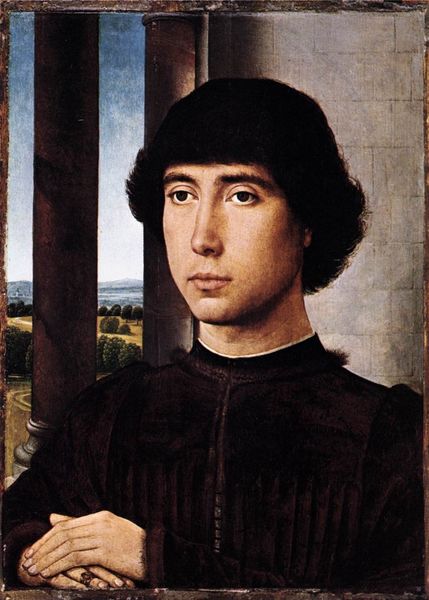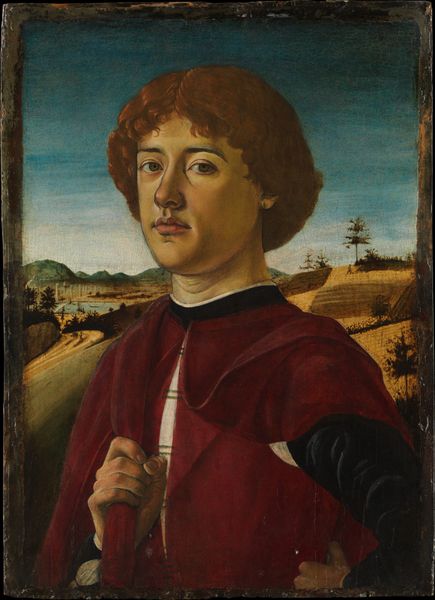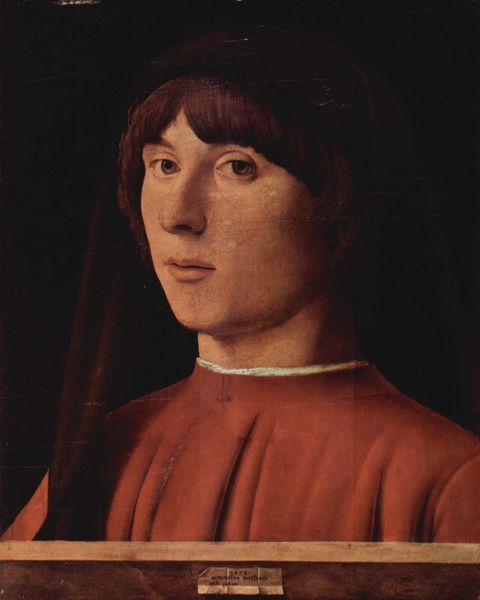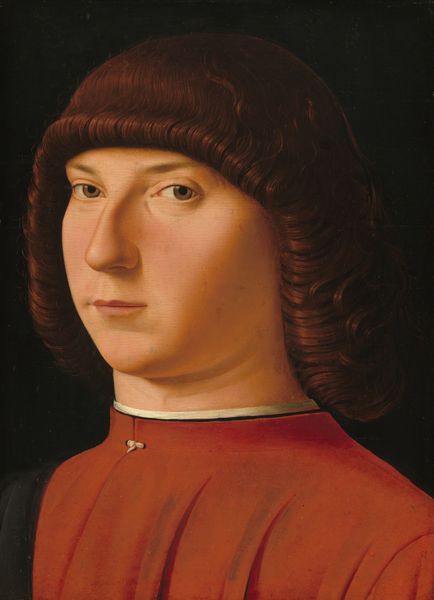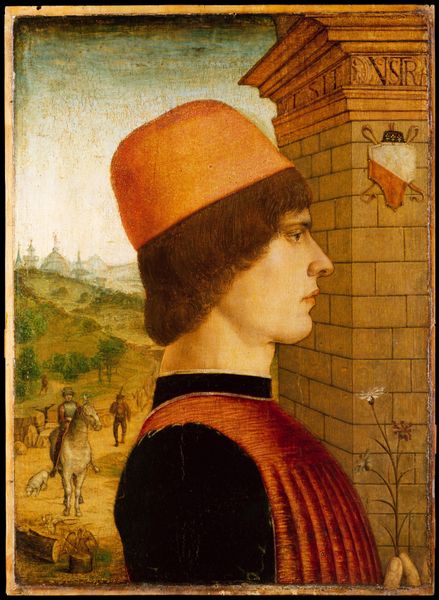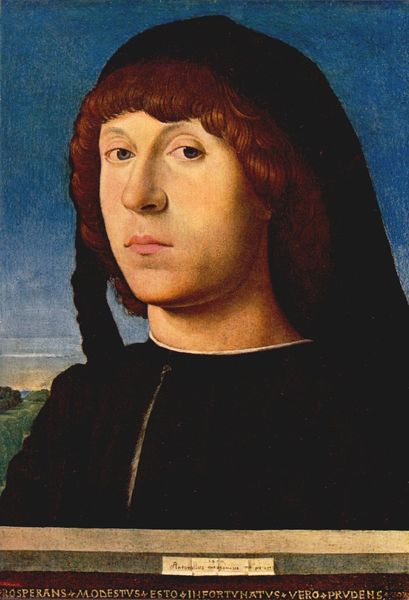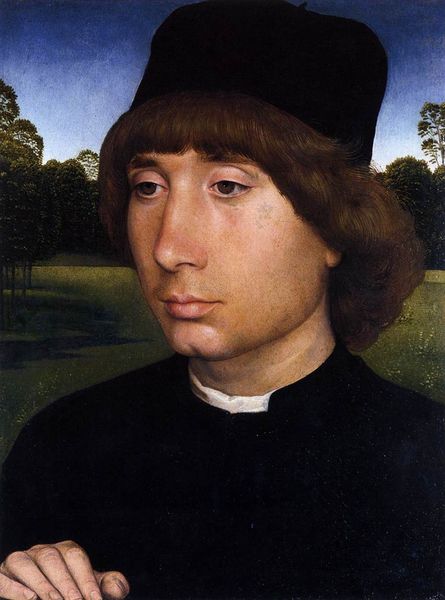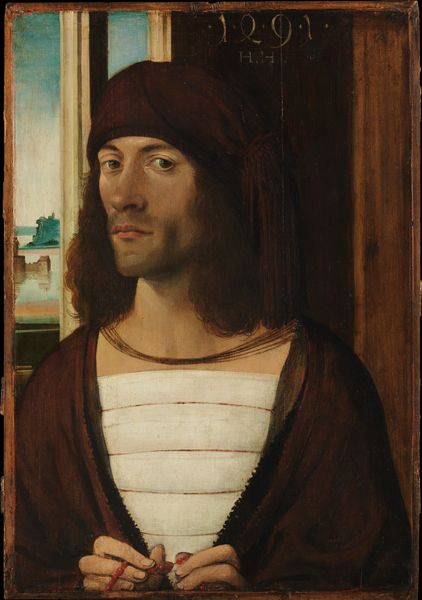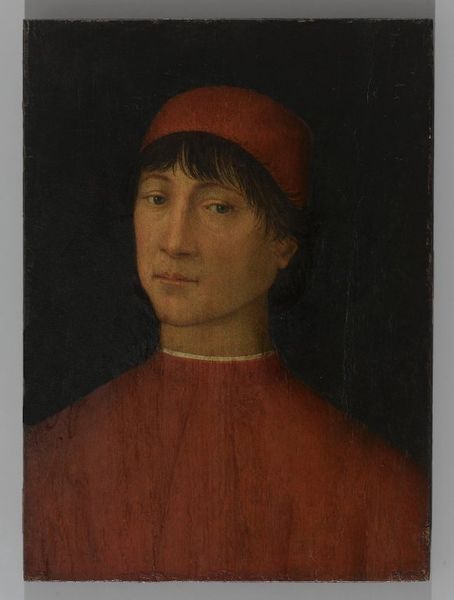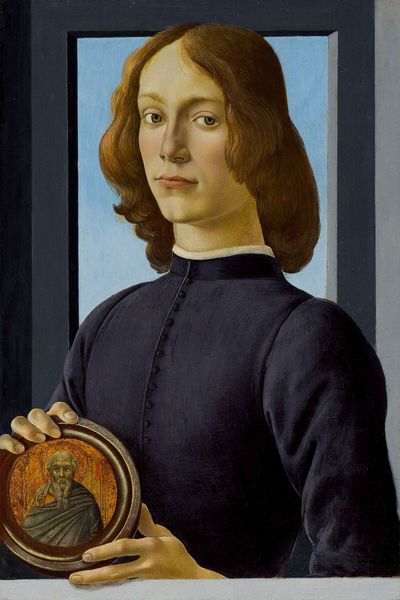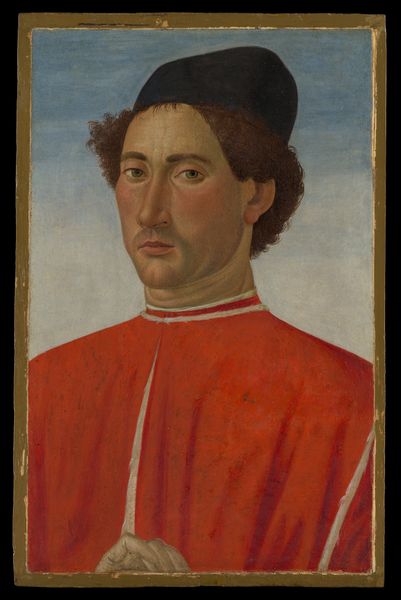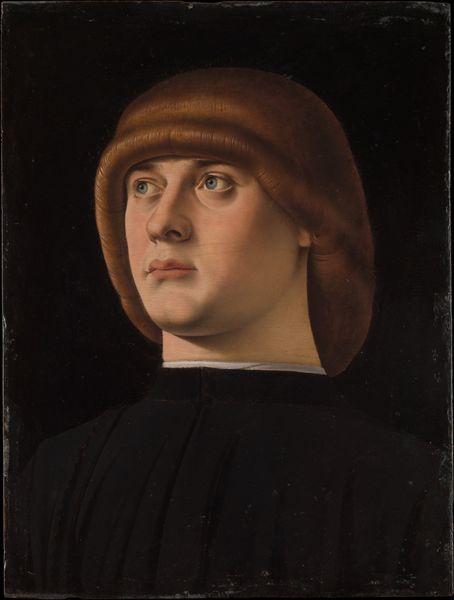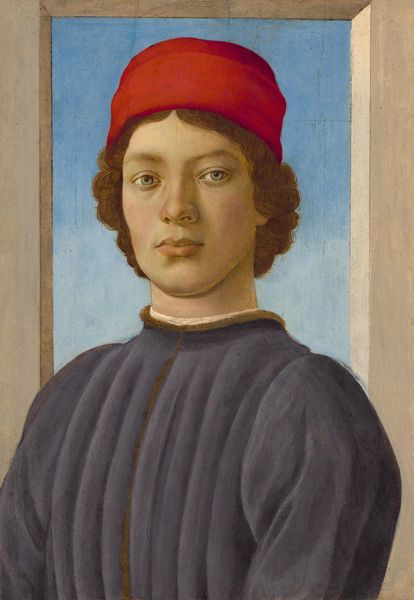
painting, oil-paint
#
portrait
#
painting
#
oil-paint
#
landscape
#
men
#
genre-painting
#
northern-renaissance
#
italian-renaissance
#
portrait art
Dimensions: Overall 15 3/4 x 11 3/8 in. (40 x 29 cm); painted surface 15 1/8 x 10 3/4 in. (38.3 x 27.3 cm)
Copyright: Public Domain
Editor: This is Hans Memling’s "Portrait of a Young Man," painted in oil sometime between 1467 and 1477. The young man seems so serene, almost detached, against that idyllic landscape. What do you see in this piece? Curator: I see a carefully constructed image reflecting the evolving status of the individual during the Renaissance. Memling wasn't just capturing a likeness; he was actively participating in shaping an ideal of masculinity and nobility. The backdrop, the clothing, even the way the light falls, are all designed to project a specific message about status and power. Editor: How so? The plain dark clothes don't scream 'power' to me. Curator: Consider the context. Sumptuary laws in that period often dictated who could wear what. The luxurious fabrics, even in their relative simplicity, would have signified wealth and status. Beyond the overt symbols, think about who was typically immortalized in portraits during this period. These commissions weren’t accessible to everyone, so we must ask about the societal dynamics influencing the artist. Editor: That makes sense. So, by painting this young man, Memling participated in a system that reinforced existing social hierarchies? Curator: Precisely! And look closely – the landscape isn’t just decorative. It implies control and ownership over land, projecting an image of dominion. These early portraits contribute to broader cultural narratives about identity, class, and representation. The serenity you noted also plays into this carefully managed image, aligning with contemporary ideals of comportment and self-possession for those in positions of power. Editor: I hadn't thought about portraits in terms of power structures like that before. Now I’m seeing it in a whole new light. Curator: Exactly, art doesn’t exist in a vacuum. Considering it in its historical and social context enriches our understanding.
Comments
No comments
Be the first to comment and join the conversation on the ultimate creative platform.
